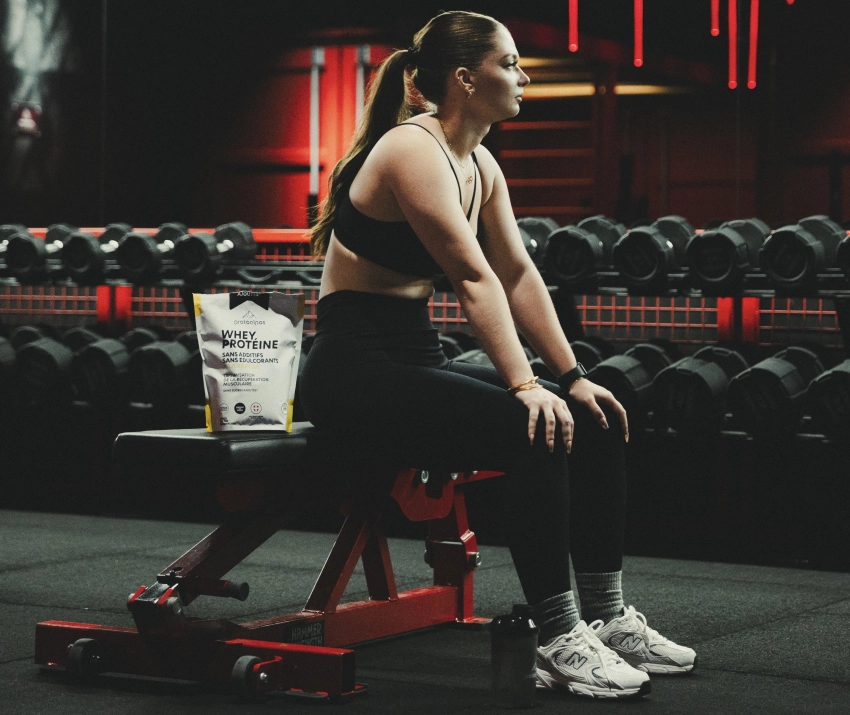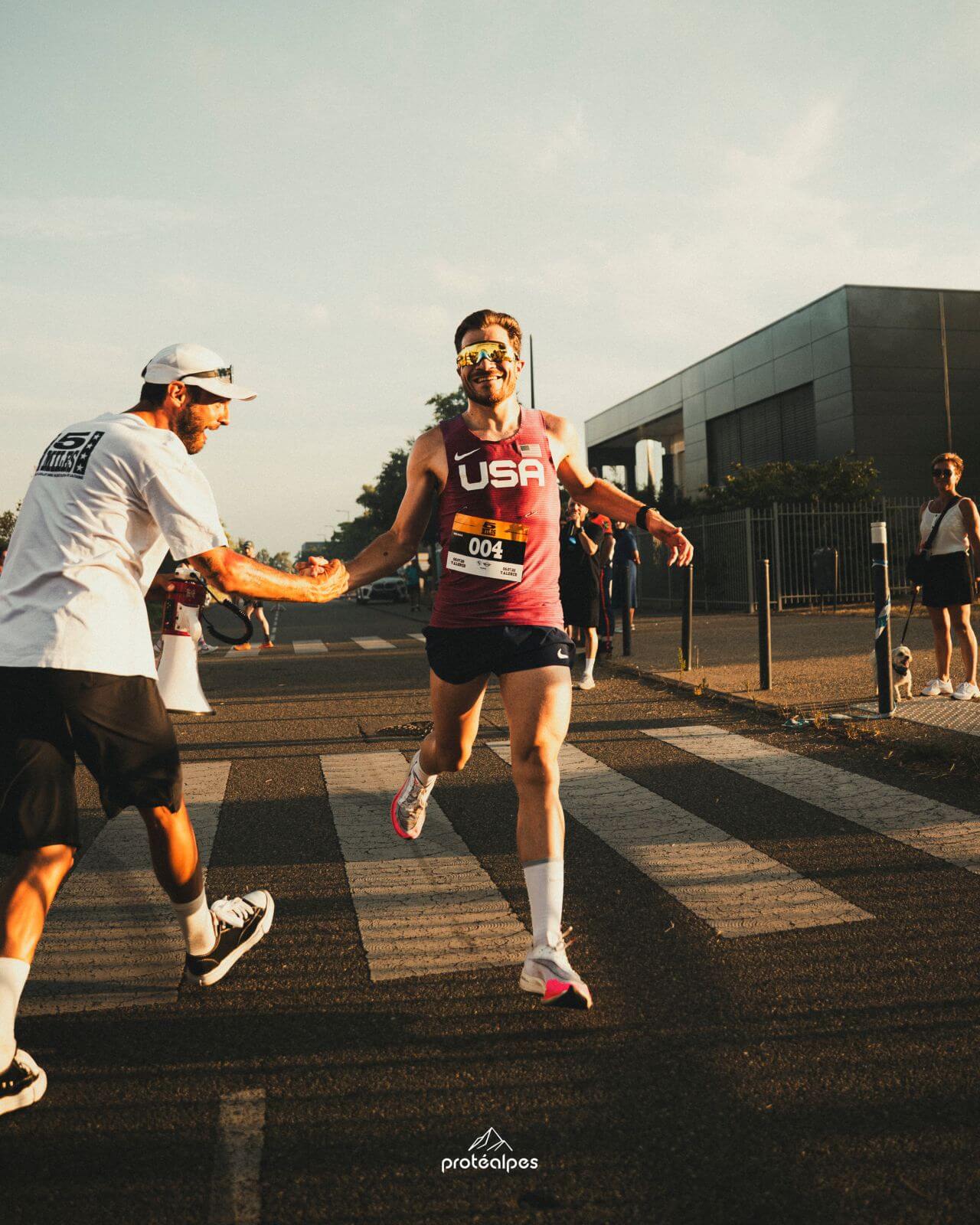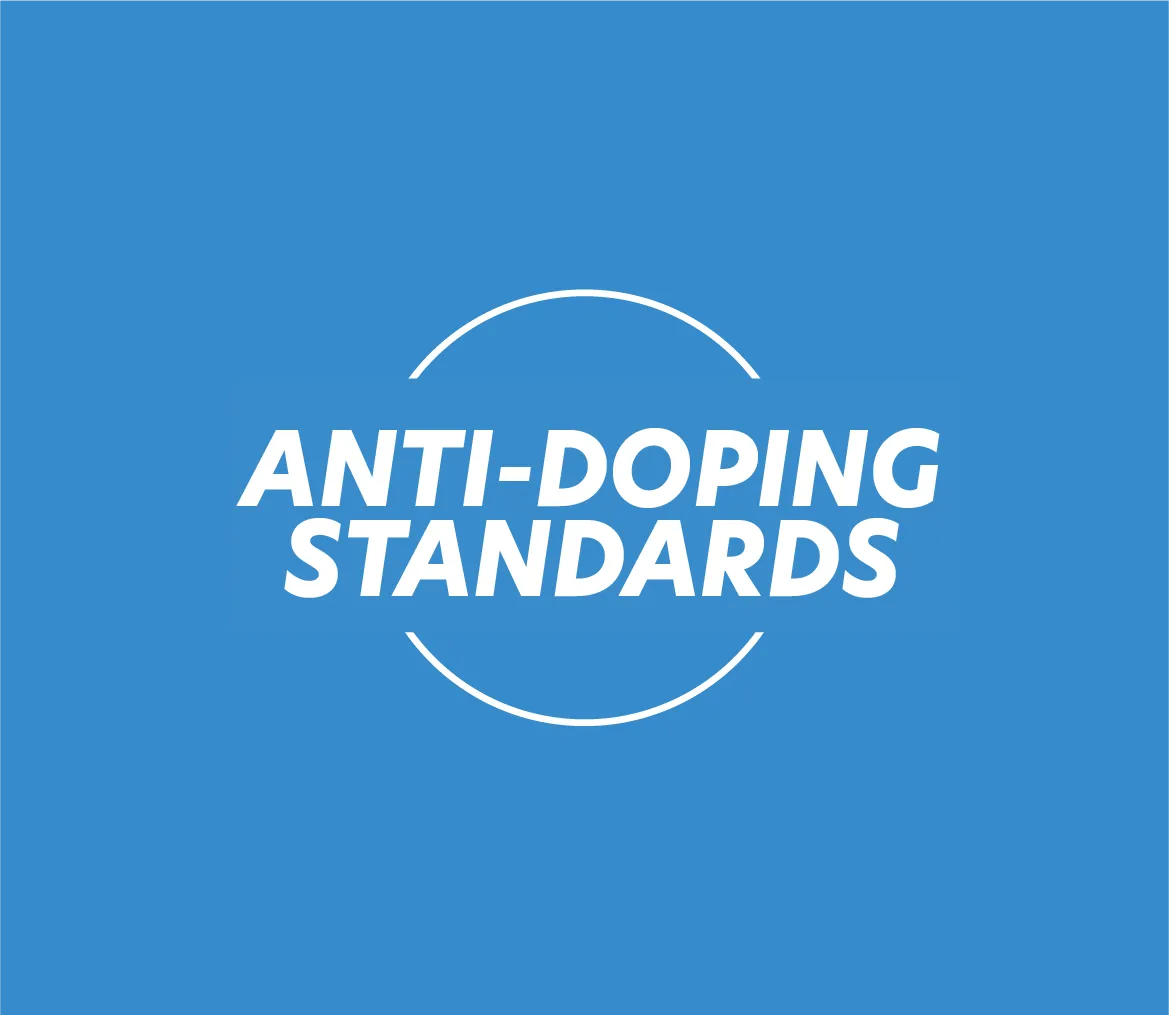Overtraining: understanding, detecting and preventing the syndrome in athletes
Overtraining syndrome is one of the biggest threats to any athlete, amateur or professional.
This condition results from an imbalance between intensive training and insufficient recovery, leading to a significant drop in performance and significant physical and psychological consequences.
Overtraining prevention questionnaire
Assessment of stress, mood and psychic variability - 12 questions for an initial diagnosis
Results of your evaluation
Interpretation
Recommendations
What is overtraining?
Overtraining, also known as "overtraining syndrome", is a state of chronic fatigue caused by excessive sports training. This phenomenon goes far beyond mere transient fatigue, and is characterized by the body's inability to recover despite periods of rest.
According to the medical definition, overtraining occurs when the balance between training load and the body's ability to recover is upset. Overworked muscles are unable to replenish their energy and regenerate properly.
This condition affects all types of sportsmen and women, from amateur runners preparing for their first marathon to top-level athletes aiming for the Olympic Games. Endurance sports such as running, cycling and swimming are particularly concerned, requiring high training volumes and intensive physical preparation.
The process of overtraining sets in insidiously over a period of weeks or even months. Unlike normal training fatigue, which disappears with rest, the persistent fatigue of overtraining persists even after a prolonged period of recovery.
The following files provide further information on these aspects:

Symptoms and signs of overtraining
Physical manifestations
The physical symptoms of overtraining are many and varied. The most obvious sign is a drop in performance:
- the athlete experiences an unexplained decrease in performance,
- stagnation of heart rate during training,
- an increase in resting heart rate.
Muscle and joint pains become persistent, lasting more than 72 hours after exertion. The immune system weakens, making the athlete more susceptible to viral infections such as strep throat or the flu.
Sleep disorders manifest themselves in difficulty falling asleep and restless sleep, despite physical fatigue.
The increase in injuries is a major warning sign. Strains, sprains and stress fractures become more frequent, testifying to the exhaustion of the muscular and articular system. Loss of appetite and weight loss can also accompany this condition.
Psychological consequences
Overtraining has a profound effect on the athlete's psychological state.
Irritability and emotional instability become common, accompanied by lowered self-esteem due to feelings of powerlessness in the face of poor performance.
A characteristic symptom is loss of motivation for training and competition. The athlete may develop a real aversion to his or her sport, losing the pleasure that originally drove it. This devaluation of sport is often accompanied by a feeling of diminished accomplishment.
In the most severe cases, overtraining can lead to depression. Mood disorders, concentration difficulties and feelings of isolation are common. Some athletes even develop an addiction to sport (bigorexia or sportoolism), unable to stop despite their body's warning signals.
Hormonal and biological disorders
Overtraining causes significant hormonal imbalances. In men, the testosterone/cortisol ratio decreases, while in women, disturbances to the menstrual cycle can occur. An increase in the stress hormone cortisol reflects the body's state of hypervigilance.
Biological tests often reveal progressive anemia and a reduction in lean body mass. Pro-inflammatory cytokines, immune messengers, are released in excess, explaining the generalized fatigue and persistent pain.
Summary table of physical, psychological and biological manifestations
| Category | Symptoms | Detailed description |
|---|---|---|
| Physical manifestations | Reduced performance | - Unexplained reduction in performance - Stagnation of heart rate during training - Increase in resting heart rate |
| Persistent pain | Muscle and joint pain lasting more than 72 hours after exercise | |
| Weakened immune system | Increased susceptibility to viral infections (strep throat, flu) | |
| Sleep disorders | Difficulty falling asleep and restless sleep despite fatigue | |
| More injuries | Major warning signs: - More frequent muscle strains - Repeated sprains - Fatigue fractures - Exhaustion of the muscular and articular system | |
| Loss of appetite | Reduced appetite leading to weight loss | |
| Chronic fatigue | Persistent exhaustion unresolved by usual rest | |
| Impaired recovery | Inability to recover normally between sessions | |
| Psychological consequences | Irritability and instability | Frequent mood swings, emotional outbursts |
| Low self-esteem | Feeling powerless in the face of poor performance | |
| Loss of motivation | Characteristic symptom: - Aversion to training and competition - Loss of initial pleasure - Devaluation of the practice of sport | |
| Feeling of lesser accomplishment | Feeling that results do not match efforts made | |
| Depression (severe cases) | - Persistent mood disorders - Difficulty concentrating - Feeling of isolation | |
| Sport addiction (bigorexia) | Sportoolism: Inability to stop despite the body's warning signals | |
| Hormonal and biological disorders | Hormonal imbalances (men) | Decreased testosterone/cortisol ratio |
| Menstrual disorders (women) | Disturbance of menstrual cycle, possible amenorrhea | |
| Increased cortisol | Elevated stress hormone reflects hypervigilance | |
| Progressive anemia | Decrease in red blood cells and lean body mass | |
| Systemic inflammation | Excessive release of pro-inflammatory cytokines: - Generalized fatigue - Persistent pain |
Causes of overtraining syndrome
Training factors
Excessive training volume is the main cause of overtraining. Too rapid an increase in the intensity or frequency of sessions, without progressive adaptation, overloads the body beyond its capacity to adapt.
Inadequate recovery is the other decisive factor. Rest periods between sessions, essential for regenerating muscle fibres and replenishing energy reserves, are often neglected or insufficient.
Monotonous training can also contribute to overtraining. A repetitive program, without variety or appropriate periodization, prevents the body from adapting properly to the workloads imposed.
For those in the know, the links with quantifying mechanical stress should be obvious by now. This video from the Clinique du coureur explains the concept in detail.
In a nutshell:
- Too rapid an increase in intensity or frequency of sessions overloads the body beyond its capacity to adapt.
- Lack of periodization and monotony in training prevent the body from adapting properly to workloads.
On this subject, our dossier on recovery time after exercise and our 15 tips for rapid muscle recovery are as comprehensive as they are useful.
Environmental and personal factors
Unusual psychological stress, whether professional, personal or family-related, amplifies the risk of overtraining. The body struggles to cope simultaneously with training constraints and external stresses.
An unbalanced diet or relative energy deficit compromises recovery. Nutritional deficiencies, particularly in iron, vitamins and carbohydrates, limit the body's ability to repair damaged tissue and replenish its reserves.
The nutritional vicious circle of overtraining follows a well-documented process:
- The depletion of muscle glycogen reserves triggers the release of pro-inflammatory cytokines, creating a state of chronic inflammation.
- This inflammation diverts essential amino acids (tryptophan, tyrosine) from their primary function, reducing the production of serotonin and dopamine - neurotransmitters crucial to well-being and motivation.
- At the same time, the imbalance between pro-inflammatory omega-6s and anti-inflammatory omega-3s amplifies and perpetuates this pathological state.
The 4 nutritional pillars of overtraining prevention
| Pillar | Objective | Recommended dosage | Food sources | Timing/Tips |
|---|---|---|---|---|
| Anti-inflammatory | Rebalancing omega-6/omega-3 | 4:1 to 2:1 ratio | - Oily fish 2-3x/week - Rapeseed/nut oil 2-3 tbsp/day - Ground linseed - Nuts 5-6 units/day | Limit sunflower, corn and deli oils |
| Energy | Maintain muscle glycogen | 5-7g carbohydrates/kg/day | - Wholegrain cereals - Pulses - Fruit 2-3 portions/d - Sweet potato, beet | Crucial in the 2-hour post-workout period |
| Antioxidant | Neutralize free radicals | ≥5 fruit/vegetable servings/day | - Colored berries - Green/colored vegetables - Turmeric, ginger - Wheat germ | Variety of colors = variety of antioxidants |
| Hydration | Eliminate toxins | 1.5-2L water/day + electrolytes | - Pure water - Exercise drinks - Water-rich foods - Sodium, potassium, Mg | Clear urine = hydration OK |
Nutritional alarm signals:
- Persistent fatigue + loss of appetite + "wall" sensation = glycogen depletion
- Muscle pain > 72h = excessive inflammation
- Repeated infections = antioxidant/omega-3 deficiency
Environmental factors such as extreme weather conditions (heat waves, harsh winters), time zone changes or altitude can also contribute to the development of the syndrome.
Finally, for young athletes, pressure from family and coaches can push them to exceed their limits. This external pressure, combined with excessive perfectionism, considerably increases the risk of overtraining.
| Category | Risk Factors | Description and Impact |
|---|---|---|
| Training factors | Excessive training volume MAJOR RISK | Main causes of overtraining: Too rapid an increase in intensity Frequency of sessions without progressive adaptation Overloading the body beyond its adaptive capacity |
| Insufficient recovery DETERMINING FACTOR | Neglected or insufficient rest periods: Compromised regeneration of muscle fibers Incomplete replenishment of energy reserves Imbalance between effort and recovery | |
| Monotonous training MODERATE RISK | Repetitive and unsuitable program: Lack of variety in exercises Inadequate periodization Insufficient adaptation to workloads | |
| Environmental and personal factors | Psychological stress AMPLIFIER | Multiple tensions: Professional, personal or family stress Simultaneous management of training constraints + external tensions Cognitive and emotional overload |
| Unbalanced power supply COMPROMISE RECOVERY | Relative energy deficit: Iron, vitamin and carbohydrate deficiencies Limited repair of damaged tissue Insufficient replenishment of reserves | |
| Extreme weather conditions ADDITIONAL STRESS | Environmental factors: Heatwave or harsh winter Time zone changes Altitude adaptation | |
| Peer pressure YOUNG ATHLETES | Specific to young athletes: Excessive family pressure Coach's expectations Exceeding personal limits | |
| Excessive perfectionism AGGRAVATING FACTOR | At-risk personality trait: Combination of external + internal pressure Inability to accept limits Constantly seeking to surpass limits |
Diagnosis and screening
Assessment tools
The diagnosis of overtraining remains complex, as there is no specific biological marker. The French Society for Exercise and Sports Medicine (SFMES) has developed a screening questionnaire to help assess the risk of overtraining in athletes.
This questionnaire assesses various parameters: fatigue, sleep disorders, mood variations, persistent pain and reduced motivation. TheAmerican College of Sports Medicine also recommends the use of these screening tools in the follow-up of top-level athletes.
SFMES questionnaire - Screening for overtraining
French Society of Exercise and Sports Medicine
Instructions: Answer YES or NO to each question, thinking about the past month.
-
-
Recommendations
Further tests
Biological tests help rule out other causes of chronic fatigue. A complete blood workup including CBC, ferritin, creatinine and inflammatory markers helps rule out anemia, iron deficiency or infection.
Hormone measurements can reveal the imbalances characteristic of overtraining. The measurement of salivary cortisol and sex hormones provides information that can help the doctor assess the body's state of stress.
Finally, assessment of resting heart rate variability is an increasingly popular tool for early detection of signs of excessive fatigue. This measurement, which can be performed daily by the athlete, enables personalized monitoring.

Prevention and recovery
The prevention of overtraining is based on a global, personalized approach. Periodization of training is the basis of this prevention, alternating load phases and recovery phases according to well-defined cycles.
Listening to your body and recognizing the first signs of fatigue are essential. Athletes must learn to differentiate between normal training fatigue and persistent fatigue, which can signal the onset of overtraining.
Regular medical check-ups enable early detection of imbalances. Sport and health check-ups, including assessment of general condition, performance and biological parameters, should be carried out systematically.
A balanced diet adapted to energy requirements is crucial. Carbohydrate intake must cover muscle glycogen replenishment needs, while proteins promote tissue repair.
Managing overtraining
When overtraining is diagnosed, treatment must be immediate and radical. Rest is the treatment of choice, with a temporary halt to intensive training or a drastic reduction in loads.
Recovery time varies according to the severity of the syndrome, ranging from a few weeks to several months. It is generally considered that the time required to return to peak performance is equivalent to the time the athlete spent in a state of overtraining.
Psychological support is often necessary to help athletes accept this period of forced inactivity and regain their motivation. The support of family and friends plays a crucial role in this recovery phase.
A healthy diet, rich in antioxidants and omega-3s, promotes the repair process. Hydration and quality sleep complete this global therapeutic approach.
Gradual recovery
Resuming training must be extremely gradual and closely monitored. You need to replenish your energy levels before starting any intense activity. The first sessions should focus on active recovery and low-intensity exercise.
The aim is not to make up for lost time as quickly as possible, but to gradually rediscover the pleasure of sporting activities. This patient-centred approach helps to avoid relapses and build a solid foundation for the future.
The trainer plays a major role in this recovery phase. He must adapt his program to the athlete's progress and maintain open communication to detect any signs of recurrence.
In a nutshell
- Overtraining results from an imbalance between effort and recovery
- It affects all levels of sporting activity, not just top-level athletes.
- Symptoms can range from reduced performance and chronic fatigue to mood disorders.
- Prevention requires a comprehensive approach that includes training, nutrition and recovery.
- Treatment involves forced rest and specialized medical care.














